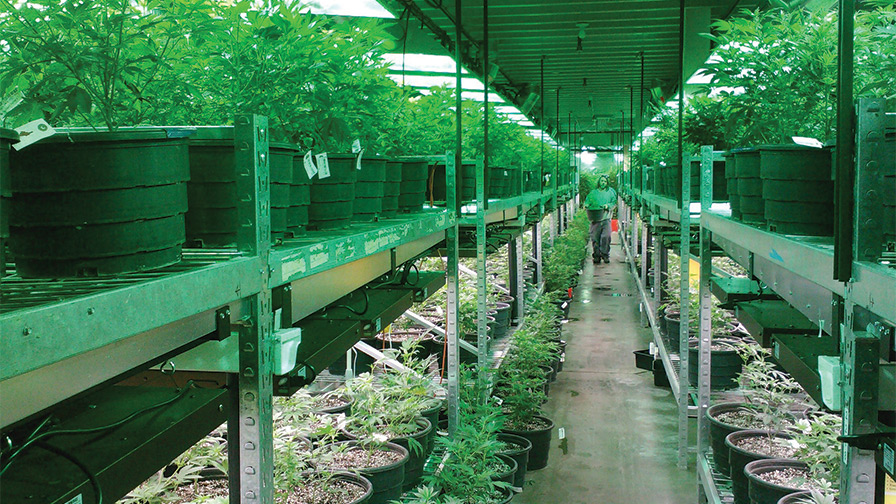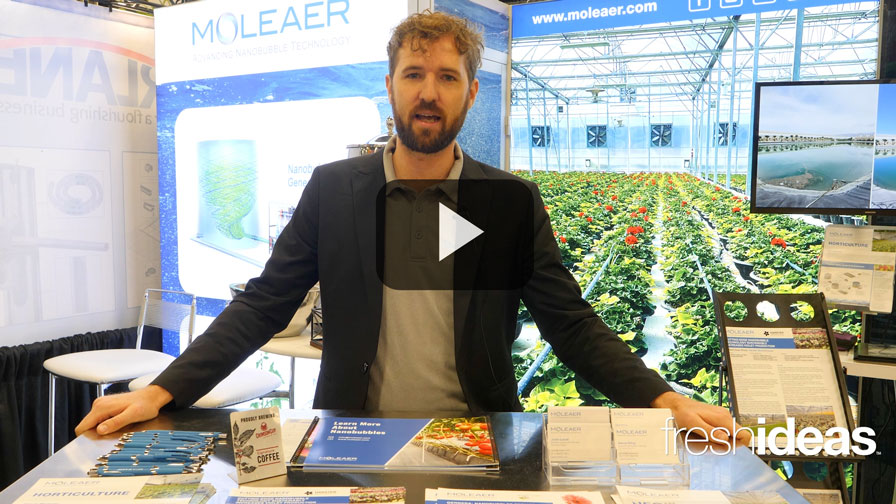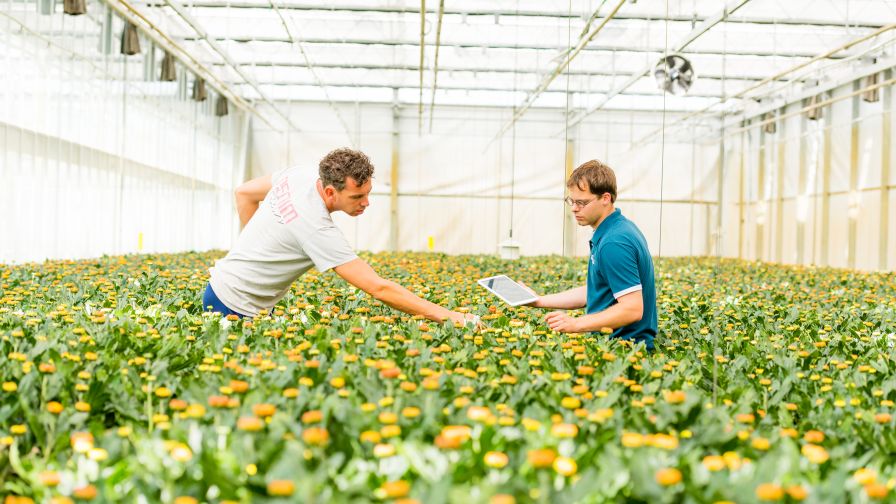What You Need to Know Before Leasing to a Cannabis Grower

Production costs in greenhouses are cheaper per square foot than for indoor facilities, which puts greenhouses in demand for growing cannabis.
Marijuana has moved into the mainstream, as more than half the U.S. has legalized cannabis for medicinal use. The result: cannabis has sparked demand for greenhouses, in which the production costs are cheaper per square foot than indoor facilities.
Perhaps you have open greenhouses, or are looking to downsize your operation. Consider leasing greenhouse space to a cannabis cultivator. You could generate huge profits in a $6.6 billion market that’s poised to overtake Netflix ($6.6 billion), McDonald’s ($8 billion), and firearms sales ($12 billion) in 2019, according to Marijuana Business Daily’s 2018 Factbook.
Take California’s Monterey County, for example. Drawn to the state’s temperate central coast, cannabis producers have filled inactive greenhouses that once served the cut flower market, whose business withered as cheap imported flowers entered the U.S. from abroad in the 2000s.
As a result, “This has been a landlord’s market,” says Aaron Johnson, a Monterey attorney specializing in cannabis.
Before you post a For Rent sign, here are the major factors, risks, and legal issues surrounding what’s becoming a lucrative cash crop.
Know the Tenants
Like an investor buying stock, do your due diligence on prospective tenants. Ensure they’re properly licensed by your state. Determine that the owners have a successful track record, and that they don’t balk at requests for information.
If you’re counting on a tenant to make monthly payments to pay your mortgage, you risk missing rent payments if growers aren’t viable.
In a case of a tenant’s business failing, growers could abandon property and leave environmental degradation behind. Cannabis grows can be hard on resources.
One way to draw serious growers and mitigate potential snafus: Require a healthy deposit from your tenants. One to three times the monthly rent is typical in cannabis, “but I have seen it as high as 12 times the rent,” says Staci Laine, a Real Estate Broker with TRI Commercial and founder of 420 Land Locator in Sacramento, CA.
Landlords With Mortgages
Is there a bank loan on your property?
“Every time I draw up a lease, that’s my first question,” says Vince Sliwoski, author of the Canna Law Blog and an attorney with Harris Bricken in Portland, OR.
Marijuana is still illegal under federal law. That means lenders can call the loan, usually couched in something called a due-on-sale clause, if they discover any violation of federal law occurring on the property. This risks foreclosure.
In reality, banks are generally happy to receive monthly payments as long as it’s not smelly cash, Sliwoski says.
“I tell clients clearly that the bank could exercise the due-on-sale clause at any moment,” he says. “Do banks do that as a policy? Not really.”
One alternative to help with this issue: Seek different financing in private markets to avoid having your loan called.
Eye On Insurance
In general, the insurance categories aren’t much different from other agricultural operations: fire, flood, and liability coverage. Your tenant would carry policies like crop insurance, and directors and officers liability.
But expect any policy to be more expensive when cannabis use is added to the property, regardless of if you or the tenant is paying for the policy. Be clear on who must obtain and maintain which kinds of coverages, what the policy limits are, and what happens (or who pays) if costs change.
Note, you’ll need an insurer who writes policies for cannabis and excludes federal-law-type language from whether the claims can be made or honored, Sliwoski says.
There’s one harbinger of change: In May, California approved the first lessor’s risk policy for cannabis landlords to be written by a traditional state-admitted insurer.
Security and Access
Some states, like Colorado and Washington, require 24-hour camera monitoring of the entire cannabis canopy using specific resolution footage. Other states require growers to keep 90 days worth of video.
“You’re running a compliance business, and you just happen to be planting cannabis in the background,” says Ellis Smith, Co-founder and Chairman of Denver-based consultancy American Cannabis Company. “It’s heavily audited.”
When it comes to accessing your facility, a landlord typically has rights to entry on the property with advance notice. With cannabis, access is more sensitive. Many growers have procedures for entry that can involve non-disclosure agreements and identification. Clear communication between landlords and growers is key.
Require your tenants not to keep cash on site. Then the threat of robbery decreases if they know there’s no stash to be found.
Capital Expenditures
Say you have an empty greenhouse you want to prepare for cannabis. Two big systems you’ll need are a blackout system, and a way to regulate humidity.
Blackout systems can be automated or manual. If your grow lights are on after sunset and you’re creating a UFO-glow, you could be violating laws and annoying your neighbors.
Dehumidification systems are expensive to run.
“Very few other ag industries use them because no one has the profit margins of cannabis,” says Will Kacheris, Greenhouse Sales Specialist at GrowSpan. “But they’re necessary depending on your geography, as cannabis thrives in warmth and cannot handle high humidity levels.”
Water, Water
Be clear about how the tenants can access water rights on the property. In Oregon, for example, water is owned by the state.
Your property may or may not have rights to use water year-round, meaning tenants might need to hook into city water or truck it in. Allocate costs accordingly.
“Greenhouses aren’t necessarily turnkey if the water rights aren’t fixed,” Sliwoski says.
For wells, clarify where the tenant responsibility ends and yours begins. Typically, the landlord is responsible for below-surface bits, and portions of the pump.
Is This All Worth It?
As you would with petunias, orchids, or daisies, figure out your revenue per square foot.
Look up what the current crop is going for per pound, figure out where that’s tracking to in the next couple years, “then price back your facility from that,” Kacheris says. He says $10 to $20 per square foot is normal. Price climbs with higher-tech or turnkey facilities. But across the board, greenhouses are cheaper than indoor spaces.
Should you skip the lease and grow cannabis yourself? Experienced growers who apply their know-how to the cultivation side is where they can really run lean, says Smith. “The risks are the same, you’re just dealing with a different plant.”









